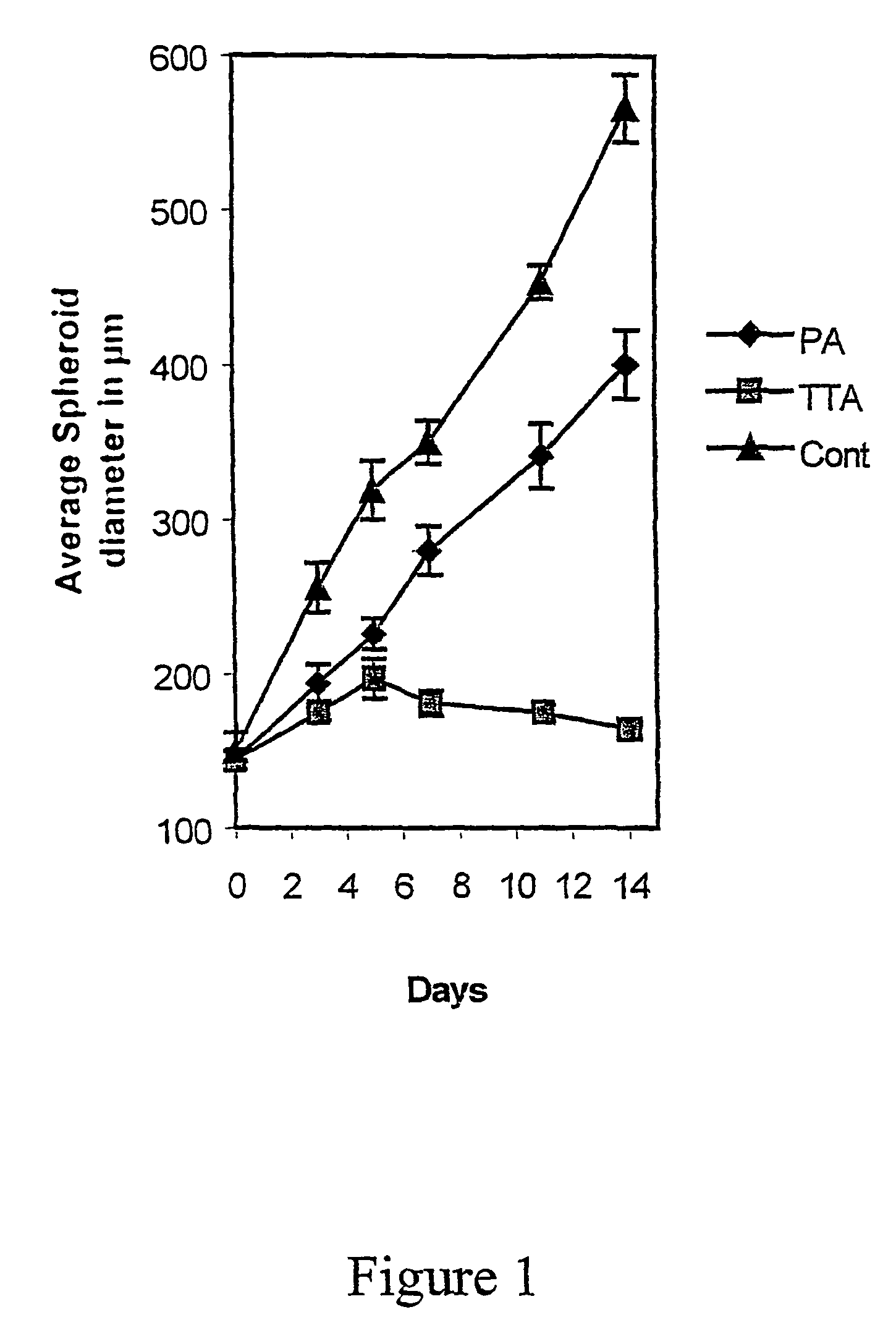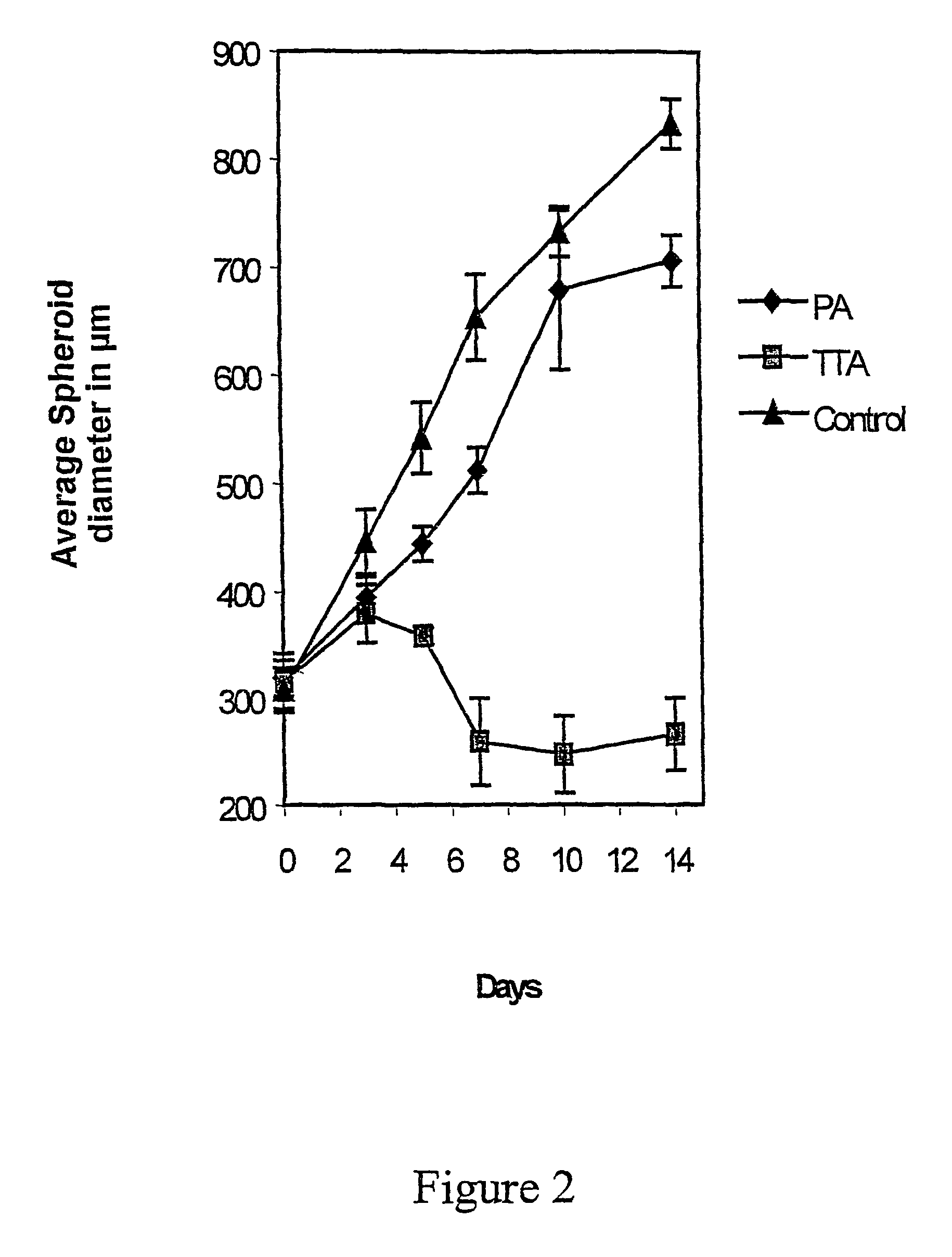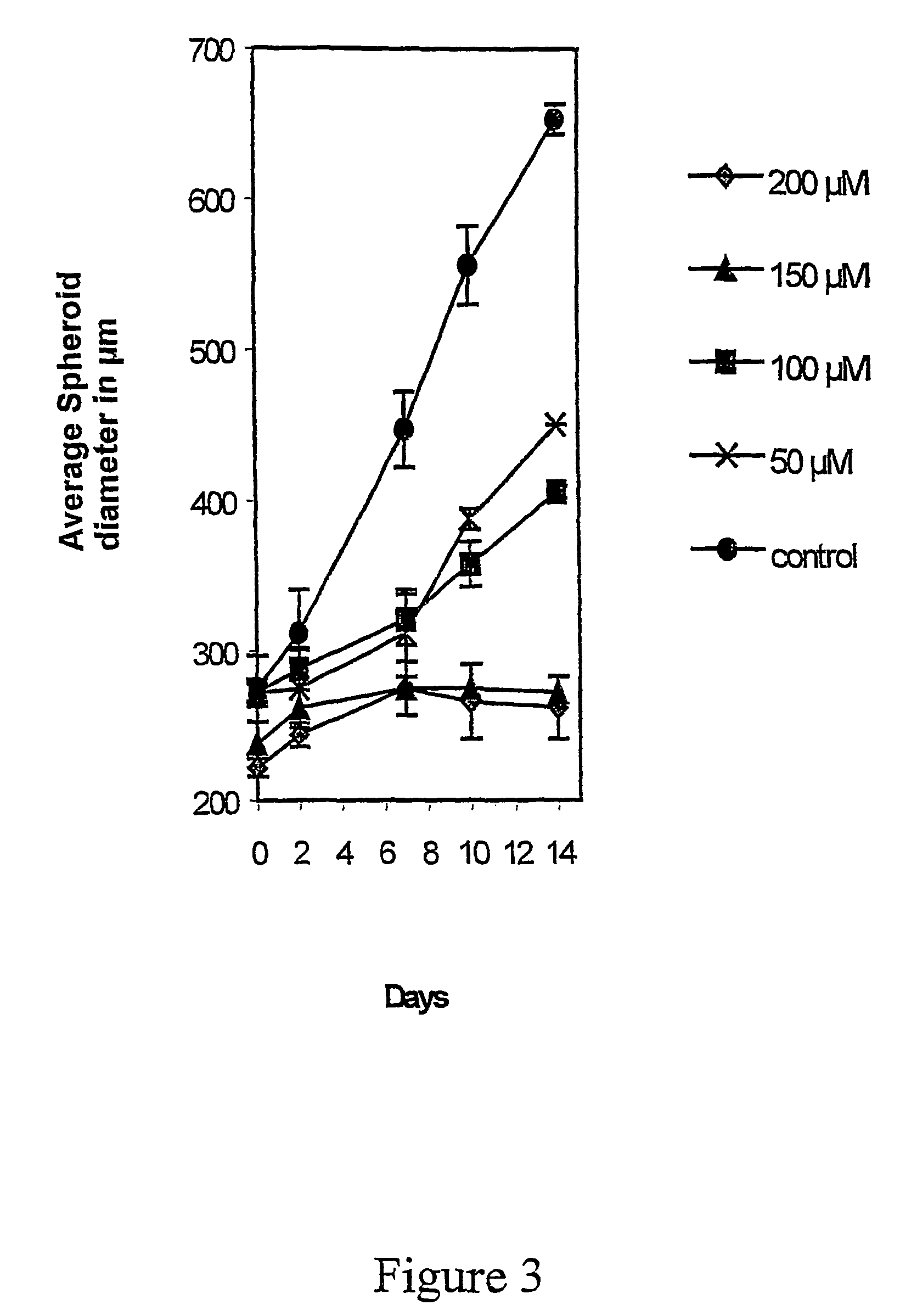Fatty acid analogues for the treatment of cancer
a technology of fatty acid analogues and cancer, applied in the direction of biocide, drug composition, borehole/well accessories, etc., can solve the problems of cancer death, related deaths, and relatively slow accumulation of tumour tissue within vital organs, and achieve the effect of reducing the risk of cancer death for patients
- Summary
- Abstract
- Description
- Claims
- Application Information
AI Technical Summary
Problems solved by technology
Method used
Image
Examples
example 1
Preparation and Characterisation of the Compounds
The Synthesis of 3-Substituted Fatty Acid Analogues
[0065]The compounds used according to the present invention wherein the substituent xi=3 is a sulphur atom or selenium atom may be prepared according to the following general procedure:
X is a Sulphur Atom:
[0066]The thio-substituted compound used according to the present invention may be prepared by the general procedure indicated below:
[0067]
[0068]The sulphur-compound, namely, tetradecylthioaceticacid (TTA), (CH3—(CH2)13—S—CH2—COOH was prepared as shown in EP-345.038.
X is a Selenium Atom:
[0069]the seleno-substituted compound used according to the present invention may be prepared by the following general procedure[0070]1. Alkyl-Hal+KSeCN Alkyl-SeCN . . .[0071]2. Alkyl-SeCN+BH4− Alkyl-Se−[0072]3. Alkyl-Se−+O2 Alkyl-Se-Se-Alkyl
[0073]This compound was purified by carefully crystallisation from ethanol or methanol.
[0074][0075]5. Alkyl-Se−+Hal-CH2−COOH Alkyl-Se-CH2—COOH
[0076]The final c...
example 2
Toxicity Study of TTA
[0078]A 28 days toxicity study in dogs according to GLP guidelines has been performed by Corning Hazleton (Europe), England. Oral administration of TTA at dose levels up to 500 mg / kg / day was generally well tolerated. Some lipid related parameters were lowered in the animals given high dosages. This is consistent with the pharmacological activity of TTA. There was no evidence of toxicity at dose levels of 50 or 500 mg / day / kg.
[0079]Covance Laboratories Limited, England, has performed tests for mutagenic activity. It was concluded that TTA and TSA did not induce mutations in strains of Salmonella typhimurium and Escherichia coli. Furthermore, TTA was not mutagenic when tested in mouse lymphoma cells and L5178Y.
[0080]The concentration of the compounds tested in S. typhimurium and E. coli were 3-1000 mg / plate (TTA) 2-5000 mg / plate (TSA). In mouse lymphoma cells, L5178Y, the concentration was 2,5-50 mg / ml.
[0081]TSA and TSA were found not to be mutagenic in these tests...
example 3
The Effect TTA on the Spheroid Growth
[0083]Multicellular tumour spheroids were obtained by seeding 3×106 cells into 80 cm2 tissue culture flasks base coated with a 10 ml (KB / KJT=20 ml) 0.75%-.agar DMEM solution (KB / KJT=3%). After 7 days incubation, spheroids with diameters between 100 and 300 μm were selected with a Pasteur pipette under a stereomicroscope. The spheroid size was determined by using an inverted microscope with a calibrated reticule in the eyepiece.
[0084]To compare the effect of the different fatty acid analogues on tumour spheroid growth, both D-54Mg and GaMg spheroids were transferred individually into 16 mm 24-well dishes base coated with 0.5 ml 0.75% DMEM-agar. D-54Mg and GaMg are human cell lines. The D-54Mg cell line was derived from a mixed anaplastic glioma and was kindly supplied by Dr. Darell D. Bigner, Duke University, Durham, N.C. The GaMg cell line was established in our laboratory and has been described in detail elsewhere (Bjerkvik et al.: Anticancer re...
PUM
| Property | Measurement | Unit |
|---|---|---|
| Concentration | aaaaa | aaaaa |
Abstract
Description
Claims
Application Information
 Login to View More
Login to View More - R&D
- Intellectual Property
- Life Sciences
- Materials
- Tech Scout
- Unparalleled Data Quality
- Higher Quality Content
- 60% Fewer Hallucinations
Browse by: Latest US Patents, China's latest patents, Technical Efficacy Thesaurus, Application Domain, Technology Topic, Popular Technical Reports.
© 2025 PatSnap. All rights reserved.Legal|Privacy policy|Modern Slavery Act Transparency Statement|Sitemap|About US| Contact US: help@patsnap.com



